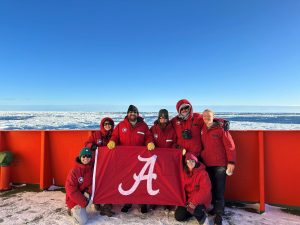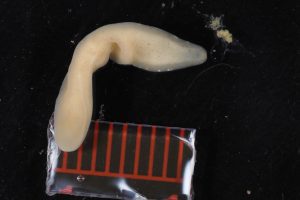
For Kevin Kocot’s team, things were busy, but successful and fun on the Nathaniel B. Palmer in Eastern Antarctica!Kevin is The University of Alabama Museum’s Curator of Invertebrate Zoology and is on board as part of his National Science Foundation CAREER grant, focused on research on the taxonomy and systematics of a group of worm-like molluscs called Aplacophora that is particularly diverse in the Antarctic and training early-career 21st century taxonomists. The ship has a shiny new epibenthic sledge sampling instrument, which is used to stir up the top layer of sediment and collect tiny animals living in it with a net similar to a plankton net.

This team has been sorting catch on board and are finding incredible diversity and some really interesting animals! They have over 300 specimens of the target group and it’s hard to say how many species, but Kevin estimates at least 35. Several of these are clearly new to science. Otherwise, they have had some really interesting ‘bycatch’ including two new species of a weird group of worms called Xenoturbella. These are thought to be part of a group that is the sister group to all other animals with bilateral body symmetry (although, this is debated).

They have also collected six specimens of a rare, mostly deep-sea class of molluscs called Monoplacophora. These are considered ‘living fossils’ as they are thought to retain a lot of ancestral traits. In 2020, Kevin and his team tried to sequence the genome of a museum specimen and from the resulting (highly fragmented) genome, they were able to show that they are the sister group to the other molluscs with one or two shells (gastropods, bivalves, etc). Now, they have fresh material properly preserved for genomics and think it might also be a new species. They will need to get specimens under the scanning electron microscope to be sure. Data from this species will help us understand how molluscs evolved from a common ancestor to their impressive diversity today, ranging from the giant squid to microscopic worms.